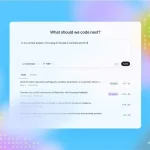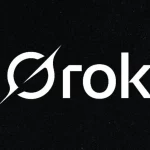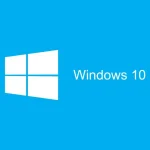SAN FRANCISCO, CA – OpenAI continues its rapid development cycle with the launch of OpenAI GPT-4.1 and its more compact counterpart, GPT-4.1-mini. These new models are now becoming available within ChatGPT, offering tangible improvements for both paying subscribers (Plus, Team, and Enterprise) and free users of the popular AI assistant. The release underscores OpenAI’s commitment to enhancing the core capabilities of its foundational models, focusing on areas like reasoning, coding, and user interaction quality.
The distinction between OpenAI GPT-4.1 and previous iterations lies in several key areas of refinement. According to OpenAI, GPT-4.1 demonstrates superior performance in understanding and following complex user instructions, a critical factor for advanced applications. It also boasts enhanced proficiency in code generation and debugging tasks, catering to the growing number of developers utilizing ChatGPT as a coding assistant. Furthermore, users can expect generally faster response times, contributing to a more fluid and efficient interactive experience. OpenAI has also worked to reduce instances of model “laziness,” where earlier versions might provide overly terse or incomplete answers.
Technical Enhancements in OpenAI GPT-4.1
The rollout of OpenAI GPT-4.1 to ChatGPT Plus, Team, and Enterprise users means they will now default to this more advanced model, benefiting from its full suite of improvements. For the considerable user base on ChatGPT’s free tier, the introduction of GPT-4.1-mini represents a significant upgrade. While “mini” suggests a model optimized for efficiency and possibly with some capability trade-offs compared to the full GPT-4.1, it is expected to be substantially more capable than the GPT-3.5 based models previously available to free users. This strategy allows OpenAI to deliver enhanced performance across its user spectrum while managing computational resources effectively.
The availability of multiple models within the ChatGPT interface is also becoming more pronounced. With the inclusion of OpenAI GPT-4.1 and GPT-4.1-mini, users, particularly subscribers, may soon have the option to choose from a diverse array of models tailored to different needs – from speed and cost-efficiency to maximum power and multimodal capabilities (like vision). Some reports indicate that the selection could expand to as many as nine distinct models, offering unprecedented flexibility but also potentially adding a layer of complexity for users in selecting the optimal tool for their task. This continuous model evolution is a hallmark of the current AI boom, as seen with Meta’s recent contributions to AI in science with new datasets and models.
From a technical standpoint, the development of OpenAI GPT-4.1 likely involved further scaling of model parameters, refinement of training datasets, and advancements in reinforcement learning from human feedback (RLHF) and constitutional AI techniques to improve alignment and safety. While OpenAI has not released a detailed technical paper for GPT-4.1 akin to its original GPT-4 system card, the focus on improved instruction-following and coding suggests targeted efforts in these domains. The challenge of AI safety and transparency remains a key industry focus, with OpenAI itself recently launching a Safety Evaluations Hub to provide more insight into its model testing.
The enterprise implications of a more robust OpenAI GPT-4.1 are significant. Businesses leveraging ChatGPT for tasks such as customer support automation, content generation, software development, and data analysis can anticipate higher quality and more reliable outputs. The improved coding abilities, for instance, could accelerate development cycles and lower the barrier to entry for complex software projects. However, as with any powerful AI tool, organizations must also consider the ethical implications, potential biases, and the importance of human oversight when integrating these models into critical workflows. The responsible deployment of AI is crucial, especially given concerns about AI-generated misinformation, such as the controversy surrounding AI fakes of public figures like Billie Eilish.
OpenAI’s iterative release strategy – from GPT-3.5 to GPT-4, and now to OpenAI GPT-4.1 – allows the company to continuously gather real-world usage data, identify areas for improvement, and deploy enhanced models to a global user base. This rapid iteration also keeps OpenAI at the forefront of the highly competitive generative AI market. The ongoing advancements in AI capabilities also put pressure on other sectors, like the music industry, to adapt, as seen with SoundCloud’s evolving AI policy.
In conclusion, the launch of OpenAI GPT-4.1 and GPT-4.1-mini marks another step forward in the accessibility and capability of advanced AI models. For developers, businesses, and individual users, these upgrades offer the potential for more powerful and efficient interactions with one of an AI assistant.







